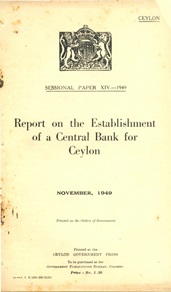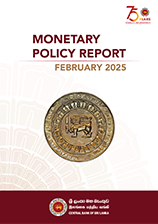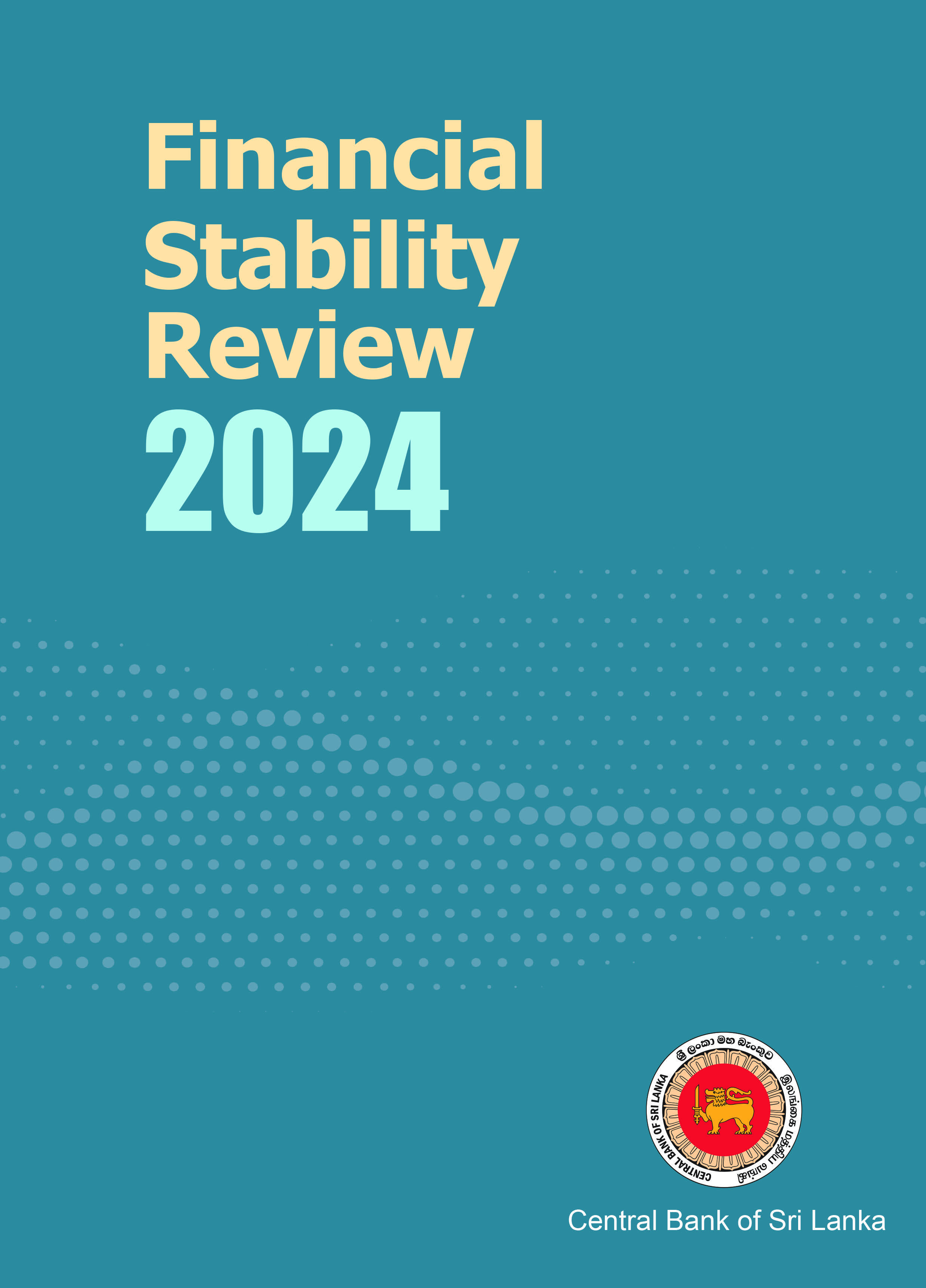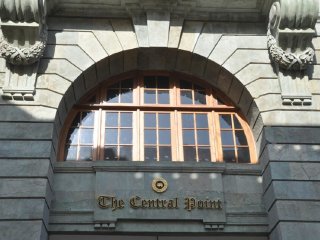With a view to accelerating economic growth in the country, special credit support scheme to eligible Small and Medium Enterprise borrowers of Banking sector had been introduced. Subsequently, considering the importance of extending the benefits of the borrowers of Non-Bank Financial Institutions Sector (NBFI), it was decided to introduce similar scheme for NBFI.
-
Credit Support to Accelerate Economic Growth
-
Monetary Policy Review - No. 2 of 2020
The Monetary Board of the Central Bank of Sri Lanka, at its meeting held on 04 March 2020, decided to maintain the Standing Deposit Facility Rate (SDFR) and the Standing Lending Facility Rate (SLFR) of the Central Bank at their current levels of 6.50 per cent and 7.50 per cent, respectively, and thereby continue its accommodative monetary policy stance. The Board arrived at this decision following a careful analysis of the current and expected developments in the domestic economy and the financial market as well as the global economy. The decision of the Monetary Board is consistent with the aim of maintaining inflation in the 4-6 per cent range while supporting economic growth to reach its potential over the medium term.
-
CCPI based Inflation increased in February 2020
Headline inflation as measured by the year-on-year (Y-o-Y) change in the Colombo Consumer Price Index (CCPI, 2013=100) increased to 6.2 per cent in February 2020 from 5.7 per cent in January 2020. This was solely driven by the statistical effect of the low base prevailed in February 2019. Food inflation (Y-o-Y) stood at 14.7 per cent in February 2020, while Non-food inflation (Y-o-Y) recorded at 2.8 per cent.
The change in the CCPI measured on an annual average basis increased to 4.6 per cent in February 2020 from 4.5 per cent in January 2020.
-
Land Valuations Indicator - Second Half of 2019
Land Valuations Indicator (LVI) for Colombo District compiled by the Central Bank of Sri Lanka (CBSL), reached 138.9 during the 2nd half of 2019, recording an increase of 10.4 per cent compared to the 2nd half of 2018. All three sub-indicators of LVI, namely Residential, Commercial and Industrial have contributed to this increase.
Residential LVI recorded the highest year-on-year increase of 10.7 per cent, while both the Commercial LVI and Industrial LVI increased by 10.3 per cent . Meanwhile, the LVI increased by 5.1 per cent in 2nd half of 2019 from 1st half of 2019.
-
NCPI based Inflation increased in January 2020
Headline inflation as measured by the year-on-year (Y-o-Y) change in the National Consumer Price Index (NCPI, 2013=100)increased to 7.6 per cent in January 2020 from 6.2 per cent in December 2019. This was driven by monthly increase of prices of items in both Food and Non-food categories. Food inflation (Y-o-Y) increased substantially from 8.6 per cent in December 2019 to 13.7 per cent in January 2020, the highest since November 2017. Further, Non-food inflation (Y-o-Y) stood at 3.0 per cent in January 2020.
-
Discontinuation of Compilation and Publication of Sri Lanka Inter Bank Offered Rate (SLIBOR)
The Monetary Board of the Central Bank of Sri Lanka decided to discontinue the compilation and publication of SLIBOR with effect from 01 July 2020. This decision was taken in consideration of the lack of usage of SLIBOR in benchmarking loan products in the domestic financial market, the global trend of phasing out the compilation and publication of offered rates including the London Interbank Offered Rate (LIBOR), requests from several Licensed Commercial Banks (LCBs) to discontinue the reporting of offered rates in the context of thin interbank market volumes for longer tenures, and the availability of alternative benchmark interest rates in the domestic financial market.
-
Appointment of a New Deputy Governor
The Monetary Board, with the concurrence of the Hon. Minister of Finance, Economy and Policy Development has appointed Assistant Governor, Mr. K M Mahinda Siriwardana as a Deputy Governor of the Central Bank of Sri Lanka (CBSL) with effect from 12th February 2020.
Mr. Siriwardana has a service of more than 28 years in the Central Bank. Prior to his recent appointment as a Deputy Governor, Mr. Siriwardana held the position of Assistant Governor in charge of Economic Research Department and Statistics Department. Mr. Siriwardana has also served as the Director of the Economic Research Department of the CBSL.
-
External Sector Performance - December 2019
Earnings from exports declined while expenditure on imports increased during December 2019, widening the trade deficit. During the year 2019, the trade deficit contracted significantly, driven by a sharp contraction in import expenditure. The speed of recovery in tourism industry accelerated in December 2019 although cumulative earnings from tourism declined during the year. Workers’ remittances increased notably (year-on-year) in December 2019 helping to moderate the cumulative decline in 2019. Meanwhile, there was a notable outflow of foreign investment from the government securities market during December 2019 while marginal net outflows were also observed from the CSE. The Sri Lankan rupee appreciated against the US dollar during 2019 and remained stable thus far during 2020.
-
Regulatory Action on a Primary Dealer - Pan Asia Banking Corporation PLC
The Monetary Board of the Central Bank of Sri Lanka, acting in terms of the Regulations made under the Registered Stock and Securities Ordinance and the Local Treasury Bills Ordinance, has decided to extend the suspension of business and activities of the Primary Dealer Unit of Pan Asia Banking Corporation PLC (PABC) for a period of six months with effect from 10.00 a.m. on 15th February 2020, in order to continue the investigations being conducted by the Central Bank of Sri Lanka.
The Central Bank wishes to emphasize that this regulatory action suspends PABC’s access to the primary auctions for government securities. It does not affect any of the other activities/services of PABC.
-
Sri Lanka Purchasing Managers’ Index - January 2020
Manufacturing PMI expanded at a slower pace in January 2020 recording an index value of 54.0 mainly due to the slower expansion in New Orders and Stock of Purchases.
New Orders, Production and Stock of Purchases sub-indices expanded at a slower pace particularly in the manufacturing of food and beverages sector with the decreasing demand after the festival season. Further, a slowdown in Stock of Purchases in textile & wearing apparel sector could be observed due to Chinese New Year holidays. The Employment contracted during the month due to the leaving of employees from their jobs for better paid employments.










